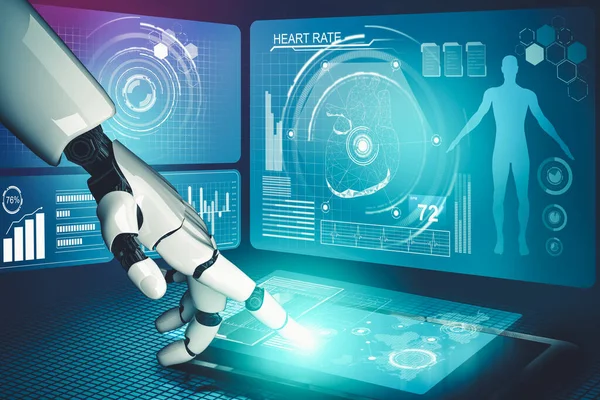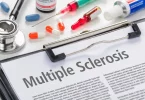Medical professions are constantly changing and growing to incorporate the latest innovations. Nursing is evolving largely through technology and its applications to bedside and other nursing care.
Digital applications and medical technology are changing the nursing landscape in pivotal ways. Patients have more access to their medical information than ever before, which can have a positive impact on medical providers and services.
As a nurse, you understand the importance of staying abreast of medical and technological changes that affect your job. Here are some of the recent changes that have a direct impact on nursing proficiency.
Nursing leaders for technology forward medicine
Many nurses have opted to pursue a graduate degree through one of the many online MSN programs to stay on top of specific technology applications and deliver the best patient care. While the benefits of earning a master’s degree are clear, the process is also advantageous to nurses who want to further their careers but must continue working.
The master of science in nursing – nurse practitioner at Wilkes University is entirely online, allowing you to advance your career in less than two years. With a program that focuses on improved, evidence-based patient care, the skills you learn will put you in high demand.
Understanding technology coupled with strong nursing experience and a high-level master’s degree can be what you need to become a nursing leader.
Medical innovations
One of the most significant technological changes for any industry is the emergence of artificial intelligence. AI’s impact on medicine is undeniable, as these medical innovations demonstrate.
Health tracking technology
While health tracking is good, the estimation of how health tracking can change the way patients interact with their physicians and nurses is dramatic. Smartwatches, fit bits, health apps, and more devices can track and record crucial information for medical providers like never before.
When a patient and medical provider agree to track the information for more accurate treatment options for problems like heart disease and chronic pain, the data compiled can provide insights that have not been possible.
Health tracking technology can monitor pain levels, sleep patterns, and other physical responses, allowing medical professionals to have more accuracy in understanding the problem so they can manage the health issues better.
Drone and commercial medical deliveries
Several hospitals are experimenting with drone deliveries from one hospital unit to another. Blood samples, medicines, and vaccines can be delivered directly and more quickly by drones than by people running from one place to another.
While it is revolutionary to think about medications being handled by drones and carried from place to place, the biggest impact might be in rural areas where they don’t have the resources to transport those items. Currently, drones can carry supplies and other medical needs from a central location to a rural hospital or medical center quickly and efficiently.
Experimentation with drones delivering medical supplies and medicines to homebound patients is currently underway. This technology can revolutionize the way medical providers treat immobile and very sick patients who have trouble traveling to the hospital or medical office.
Robots currently deliver medications to nurses on hospital floors. Once there, the nurse must swipe a badge to access the medications intended for their patients.
Automated patient sign-ins
Patients no longer have to fill out six pages of information as they arrive for an appointment. This helps nurses use valuable time for other essential duties. Medical providers can see all the health information and medical history of a patient at a glance, allowing them to be more effective and efficient from the check-in point.
Predictive analytics
Predictive analytics has shown promising results by helping medical professionals sort through large amounts of data quickly to make an informed care plan. It rapidly reduces the wait time to see if a medication is working or treatment is effective.
For example, predictive analytics can allow a doctor to see if a cancer treatment is working correctly after one treatment session. Previously, the success could only be measured after a few months. Another way this analytics information helps is by taking all the data from a patient and identifying trends such as risk factors for heart disease.
Since each patient is unique, predictive analytics can give insight into the most personalized treatment for each person.
Remote patient monitoring
Providers and patients can have real-time information with remote patient monitoring devices. From digital blood pressure monitors to glucose monitors, these devices give patients more understanding and participation in their treatment and care choices.
Remote patient monitors let critically ill patients and those with chronic health problems stay home when navigating a hospital visit or medical office is difficult.
Mobile medical imaging
Millions of people have no access to medical imaging, mostly due to locations that are remote or underserved. This is where mobile medical imaging is bridging the gap. Mobile medical imaging devices are exploding, from a handheld ultrasound machine that can help a remote medical professional evaluate, diagnose, and treat a medical condition to Doppler fetal heart rate monitors that can send information about a fetus’s heart rate.
Mobile MRI images can take digital images of a patient’s body and send them directly to a waiting medical doctor or nurse. The same is true for mobile X-ray imaging which can go where needed to send information to medical professionals who can use it to recommend a treatment plan.
While many mobile imaging devices are unnecessary in more prosperous, populated areas, they can be pivotal to outlying areas without high-tech medical applications.
Artificial intelligence for cancer screening
Some cancers are not apparent until they have progressed to a serious point, but artificial intelligence has been shown to detect cancer much earlier through imaging data. It can even detect the genetic predisposition of cancer in people.
Today, cancer imaging is more accurate and faster than ever before, leading to better detection, better assessments of the stage of the tumor, quicker information on whether the treatment is working, and faster detection when the cancer has returned.
Artificial intelligence can differentiate between benign lumps and cancerous growths. It can categorize information similarly to the brain, but in split seconds, which can be crucial when dealing with a fatal disease.
3-dimensional hearts
When someone has a heart problem, the general approach is to take imaging photos that show some but not all of the information about blocked arteries and make the best decision regarding surgery. 3D heart models give doctors and nurses a better visual representation of how the blockage exists within the heart, allowing them to make more accurate diagnoses without invasive cutting.
3D models of organs also make this approach viable for other surgeries. For instance, 3D printers can make a prosthetic for a person in a fraction of the time it takes to manufacture. This technology delivers a superior product in less time and for less money.
Augmented reality
Augmented reality, like Google Glass and others, lets medical professionals project real-time X-rays, ultrasounds, and other digital scans onto the patient’s body. These technologies help surgeons and other medical professionals better visualize the problem so they can zero in on the surgery. This is particularly valuable for brain and spine surgeries.
Augmented reality also allows patients to see what is wrong with their bodies and how the treatments will affect them physically.
Virtual rehabilitation
Most rehabilitation occurs by repeating similar movements over and over until the muscles and other body parts are working as close to normal as possible. However, virtual rehabilitation works the same way virtual games do but to expand the exercises for faster recovery.
Not only does this technology improve the repertoire of exercises, but it uses the plasticity of the brain to repair neural pathways. The feedback gives doctors and nurses more accurate ways to adapt the rehabilitation to achieve a better recovery.
Next generation vaccines
The breakthrough in messenger ribonucleic acid (mRNA), spurred by technology, is making possible the manufacture of vaccines for diseases that have never had one before. Traditional vaccines use a dead form of a disease or virus to generate an immune response but modifying the genetic codes to create vaccines can be slow.
In contrast, mRNA vaccines utilize genetic coding to tell the body to create proteins that fight the disease or virus, resulting in much faster medications. As research continues, the vaccines that can stop infectious diseases are on the horizon.
PSMA targeted therapy
PSMA is the antigen marker that indicates the presence of prostate cancer. Since this is the most common cancer diagnosis for men, combining this biomarker with a PET scan shows medical professionals exactly where the cancer is. This technology is revolutionizing the detection of prostate cancer, allowing faster treatment to stop the spread.
Robotic surgeries
Robotic-assisted surgery gives surgeons a less invasive surgical method than traditional approaches where the patient is cut open. Instead, the surgeon makes small incisions where tiny robotic instruments with cameras operate inside the body by manipulation from the surgeon.
Robotic surgeries have some significant benefits, such as shorter hospitalizations, minimal to no scarring, and less risk of infection. They also result in less blood loss, and the recovery is less painful due to the lack of large incisions.
This technology allows surgeons to move around inside the body better and gives them a clearer picture of the problem through the camera. Robotic surgery can even happen at the patient’s bedside in some cases.
Telemedicine
Telemedicine has enabled more people than ever to access quality medical care through virtual visits. Many medical providers and their patients agree that it is convenient and effective since patients can talk to a doctor from the comfort of their homes. For many people, going to the doctor is stressful, so seeing the nurse practitioner, nurse, or doctor on a screen feels much easier.
Telemedicine also gives people who live far away from a hospital, doctor, or nurse practitioner the opportunity to be evaluated, diagnosed, and get prescriptions from a medical professional. These virtual visits open doors for many people to see specialists and primary care professionals.
Convenient care locations
Technology has made going to the doctor’s office or emergency room no longer the only option for medical care. The advent of urgent centers and retail clinics staffed by nurse practitioners has dramatically expanded the convenience and ease of receiving medical treatment. Most convenient care locations don’t even require an appointment to be seen by the medical provider on site, and many are connected directly to the pharmacy, making getting medications a breeze.
Nursing and medical technology innovations benefits
Innovations and technology have made healthcare more convenient and less stressful. Because of this, more people can utilize technological advances, giving medical providers a proactive approach to detecting diseases and genetic conditions much sooner. More treatment options are available to patients with health problems that are caught early.
Many patients like the idea of seeing a nurse practitioner for their primary care visits because they see them as warmer and less intimidating than physicians. The general sentiment is that nurse practitioners in many medical settings offer more personalized care.
Technology has even paved the way for more nurses to attain online graduate degrees in their own time, which benefits patients who prefer to see them over doctors and expands the number of people who can get quality medical care.
This is good news for patients and healthcare providers in general since it enables them to treat more people with effective solutions. Technology has changed the medical landscape in many beneficial ways, especially for patients.
From homebound patients who can talk to their medical providers virtually without having to make the trip to the office or hospital to the early detection of many cancers, this new approach to delivering the best care is making the process easier for everyone.








